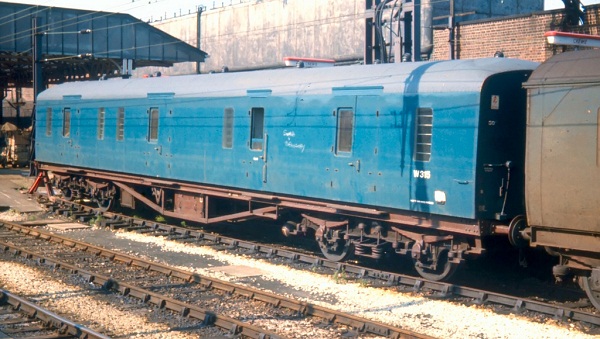 I never had this trouble at Bristol a few weeks ago
I never had this trouble at Bristol a few weeks ago
With today’s glorious summer weather I decided it was an ideal time to document the old GWR station at Reading before the whole lot gets bulldozed to make way for the shiny new station.
When I got there I was told to find the duty manager to seek permission. She then told me I could only photograph the station infrastructure, and could not photograph trains. Given that I’ve taken thousands of photographs at UK and overseas stations over 25 years, and never before have train companies ever tried to stop me taking photographs, I really don’t understand what First Great Western are playing at.
I know some large stations tried to prevent photographers a few years back through a combination post-9/11 paranoia and corporate backside-covering, but changed their tune after the resulting PR backlash.
Has anyone else had problems at Reading or any other FGW stations? Is this a new policy? What exactly is going on? It’s certainly at odds with the official photography policy of Network Rail, who own the station, or the guidelines given by The British Transport Police.
I sent this complaint to First Great Western customer services
I arrived at Reading this morning with the intention of taking photographs of the Reading station prior to redevelopment. On arrival I was advised by the barrier staff to speak to the duty manager.
The duty manager then told me that while I would be permitted to photograph the physical station infrastucture, I would not be permitted to photograph any trains.
I was extremely surprised and very disappointed on being told this, and decided to leave immediately without taking any photographs at all.
Is this a specific local rule affecting Reading, or is there a blanket ban on railway photography across all FGW stations? This is very much at odds with the widely-publicised photography policy of other TOCs such as Virgin Trains. I have certainly taken many photographs of trains at FGW stations (most recently at Bristol Temple Meads a few weeks ago) without being challenged or questioned by platform staff.
I must stress that all FGW staff I encountered were unfailingly polite.
So now, rather than spending this glorious weather outside with my camera, I’m reduced to sitting at home complaining on the Internet. I wonder what sort of response that complaint will get. Given the stories of low staff morale I’m hearing from inside FGW, they seem to be suffering from serious management problems, for which I strongly suspect my troubles are another symptom.
Update
I have now received a rather bland and somewhat patronising reply.
Dear Mr Hall
Thank you for your email of 29 September 2011. I am sorry you could not take the photographs you wished to at Reading station on the same day.
We expect everyone representing our company to be as helpful as possible at all times. We do welcome rail enthusiasts at our stations who want to take photographs for private purposes. There are various guidelines designed to ensure you have a safe and enjoyable experience in the pursuit of your interest. A key priority for us is to ensure the safety of our passengers and staff. However it is the discretion of the Station Manager to set the photography limits at a particular station.
Thank you again for bringing your experience to my attention. I do hope that future journeys with us will be trouble-free.
Yours sincerely
Siddhi Minawala
Customer Services Advisor
I do not really consider this a satisfactory answer, and I’m assuming that Reading station is off-limits for railway photography for the foreseeable future. And I very much doubt that we’ll ever be given a satisfactory reason.
Update No 2
Now get a second reply, which strongly implies that someone in First Great Western has been reading either this blog or the thread I started on RMWeb with well over a hundred replies.
Dear Mr Hall
I am writing to apologise for the problems you had recently at Reading station, when you were not permitted to take photographs of trains. I understand you were unhappy with the last response we sent you on this matter and I am sorry.
We do have to work within certain guidelines when allowing customers to photograph our trains, however this is something we will permit where we can. There is no reason why you were not allowed to do this, and I am really sorry that you were misadvised at the station about only being able to photograph buildings. I have passed this feedback on to my colleagues at Reading, who I am sure will take the necessary action to make sure this doesn’t happen again.
If you wish to take pictures of the trains at Reading, you do need to approach the Station Manager first, who will go over the guidelines with you. We don’t want to stop you from pursuing your hobby and I am sorry that our response has not been particularly helpful.
I hope this now clears things up and that you will accept my apologies for the way this matter has been handled.
Please do feel free to get in touch if I can help with anything else in the future.
Yours sincerely
Jo Coverley
Customer Relations Senior Officer










 Photo by Les Gregory
Photo by Les Gregory I never had this trouble at Bristol a few weeks ago
I never had this trouble at Bristol a few weeks ago